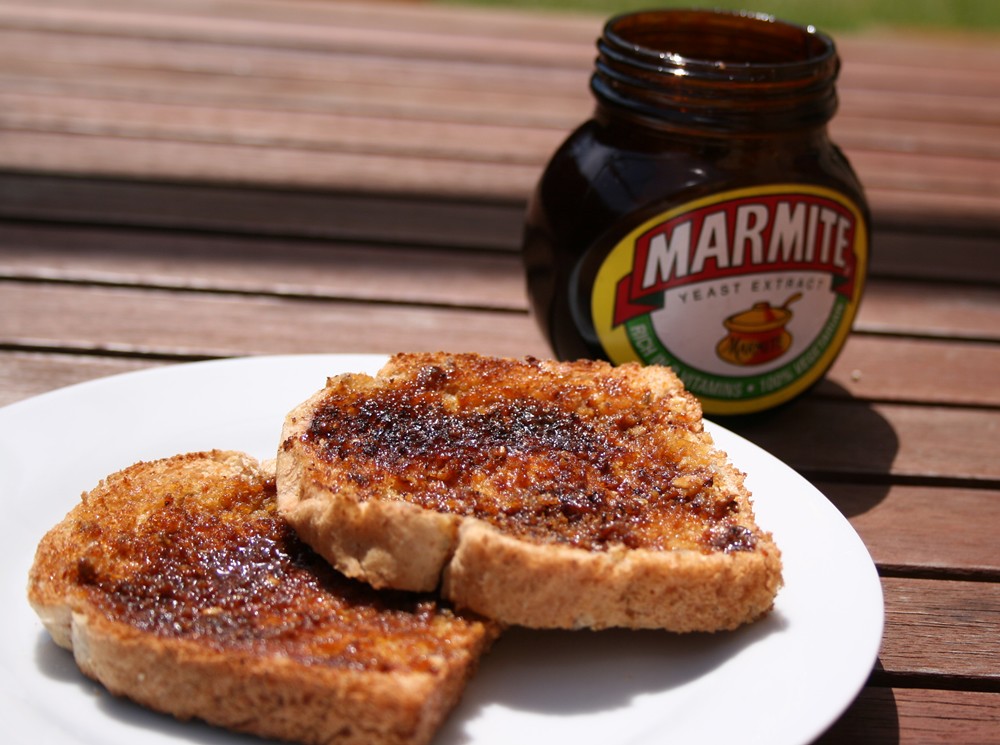Few morning pairings are as divisive and loved as Marmite buttered toast. This plain yet tasty treat has been a tradition in British culture for more than a hundred years. Its dense umami flavor and optimal proportion of crunch to creaminess make Marmite on buttered toast an event that evokes fiery arguments—love it or despise it. So why is this easy dish so dear? Let’s learn about its origins, ingredients, making, and why it remains a timeless comfort food.

A Brief History of Marmite
Marmite is a yeast extract spread which was first created in the early 20th century in the United Kingdom. It was initially manufactured by German scientist Justus von Liebig, who learned that brewer’s yeast, a waste product of beer making, could be concentrated into a nutrient-dense, savory paste. By 1902, the Marmite Food Company was established in Burton-upon-Trent, England, where it is still made today.
It’s rich in B vitamins, especially B12, and hence immediately gained a foothold as a health supplement during wartime.
As the years passed, Marmite transmogrified from a health food to become an adored—and occasionally despised—national treasure.
The pairing of buttered toast and Marmite is straightforward yet a deeply pleasing one. The rich butter tames the strong salty and umami flavors of Marmite, producing a harmony that makes individuals return again and again. Whether consumed as a fast breakfast, afternoon snack, or late evening comfort meal, this meal is as flexible as it is great-tasting.
Ingredients for a Perfect Buttered Toast with Marmite
The simplicity is what makes this dish so beautiful. You only require three ingredients:
Essential Ingredients:
2 slices of bread (white, wholemeal, sourdough, or your choice)
2 tbsp butter (unsalted or salted, softened)
1 tsp Marmite (taste and adjust to taste)
Optional Additions for Extra Flavor:
1 tsp honey (for a touch of sweetness as a contrast)
1 tbsp grated cheese (cheddar is a good option)
1/2 tsp chili flakes (for a spicy touch)
1 poached egg (for extra protein and richness)
Step-by-Step Instructions to Prepare Buttered Toast with Marmite
Step 1: Toasting the Bread
Select a superior bread with a firm structure to support the butter and the Marmite.
Toast to your desired crispiness level—some like a light golden brown, and others like a darker, crunchier version.
Step 2: Buttering Liberally
Apply softened butter evenly to the toast when still warm.
Allow the butter to slightly melt and form a creamy layer.
Step 3: Adding the Marmite
Take a small amount (about 1/2 teaspoon per slice) and spread thinly—a little goes a long way!
Adjust according to taste. If you’re new to Marmite, start with a tiny amount and build up.
Step 4: Customize (Optional)
Add honey for a sweet-salty balance.
Sprinkle with grated cheese and return to the grill for a melty, cheesy twist.
Top with a poached egg for a heartier meal.
Tips for Perfect Buttered Toast with Marmite
✔ Use high-quality butter – A rich, creamy butter brings out the flavor and softens the Marmite’s strength.
✔ Spread thinly – If it’s your first time, start lightly and then adjust to taste.
✔ Try different bread types – Sourdough, rye, or wholemeal can add different textures and flavors.
✔ Serve with tea or coffee – The bold umami flavor goes perfectly with a traditional English breakfast tea.
✔ Experiment with toppings – Cheese, honey, or avocado can provide an innovative spin.
Why People Love (or Hate) Marmite
Marmite is renowned for its strong, dense flavor, which is too much for beginners. It is referred to as salty, savory, and slightly bitter by some and its rich umami flavor is enjoyed by others. The “love it or hate it” campaign has been used by Marmite for decades, owning up to the fact that the spread is love-it-or-hate-it.
For Marmite fans, it’s a rich, homely flavor of home. For others, it’s an acquired taste—but frequently, people find themselves liking it after a few attempts!
Health Benefits of Marmite
In spite of its pungent taste, Marmite is actually full of nutrients:
Full of B vitamins, including B12, which is essential for energy production and brain function.
Low in calories – A small serving provides flavor without added fat or sugar.
Rich in folic acid, which aids healthy cell growth and development.
May promote brain health – Some research indicates Marmite’s high B vitamin levels can support cognitive function.
Final Thoughts
Buttered toast with Marmite is a classic British comfort food, loved for its simplicity, bold flavor, and nostalgic appeal. Whether you’re a long-time Marmite fan or a curious newcomer, this quick and easy recipe is worth a try. Who knows—you might just find yourself on the “love it” side of the Marmite debate!
So, get some bread, butter, and a jar of Marmite, and treat yourself to a definitively iconic British taste!

Leave a Reply